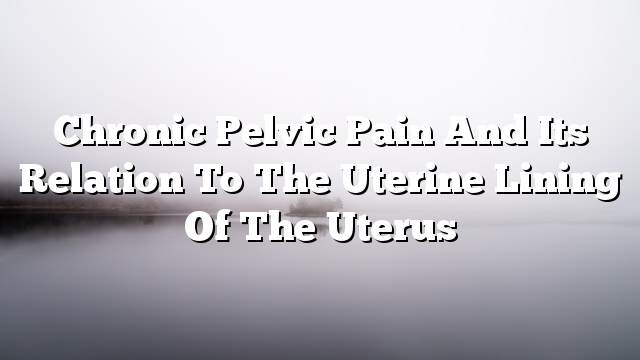What is chronic pelvic pain?
Is the pain that affects some women in the pelvic area, which is located in the lower abdomen (under the navel and above the hip), and these pains for more than six months, the pain may be continuous or it may come and go at intervals, these pains can Are so mild or severe that they may affect women’s normal daily lives.
There are several reasons, some of which are women’s reasons and some are non-women.
Endometriosis:
It is a disease related to the lining of the uterus. The tissues lining the uterus move through the pregnancy tubes to the pelvic area and settle there. These tissues may settle in the ovaries, in the wall of the pelvis or bladder, or in any member of the pelvic area such as the intestines, Dates of the menstrual cycle These extracellular tissues swell and bleed exactly as they do to the lining of the uterus itself, which usually causes pain and can lead to adhesions and scarring in the pelvic area. We will talk in detail about this disease in the next issue, .
Pelvic Inflammatory Disease
It is an infection that affects the female genitalia in the pelvis such as the uterus or tubes of pregnancy or ovaries.
It is normal for the cervix to prevent the bacteria in the vagina from moving up to these organs, but sometimes the cervix is inflamed and this allows some bacteria to spread to the rest of the members of the upper inner pelvis, causing inflammation and leads to pain and often This inflammation affects the tubes of pregnancy, resulting in infertility and damage to these tubes.
Uterine Fibroids:
It is a benign tumor (not cancer) in the muscles of the uterus, and varies in size from one patient to another, some may be the size of chickpea, others may be up to more than 20 cm.
Irritable Bowel Syndrome
It is a disease that affects the bowel and leads to irregular movement of the intestines. The intestine can contract significantly or vice versa, which leads to the movement of food in the intestine either very quickly or very slowly, which causes pain.
Chronic interstitial cystitis:
It is a chronic bladder problem that causes the bladder wall to become inflamed and irritated. This may lead to scarring in the wall and make it jerky. As a result of this cramping, the bladder does not expand by increasing the amount of urine coming from the kidneys. The bladder may bleed, and urine changes.
The pathology is very important to diagnose these diseases. Usually, the doctor will ask many questions about the patient, including, but not limited to:
What is the relationship between pain and menstrual cycle?
– Does the pain accompany stool exit?
Does the pain increase with urine or sexual intercourse?
– Has there been a strong female infection in the past?
Have you ever had a female operation in the pelvic area?
– Have you suffered or suffered from difficulty in pregnancy or infertility in the past?
After a medical history, the doctor may have to do some tests to arrive at the correct diagnosis. This may include blood tests, urine tests or radiotherapy. Sometimes, we may need to perform a minor surgery. The doctor inserts a small camera through the abdomen. Consider all members of the aquarium.
Treatment always depends on the correct diagnosis, and the doctor usually decides the best ways to treat each patient separately, and usually includes treatment on drugs or some relaxation exercises for pelvic organs, or sometimes through surgery by the endoscope.
It remains to be mentioned here that the most common causes of chronic pelvic pain is the so-called uterine lining (Endometriosis) and we will talk about this disease in detail in the next issue, .
